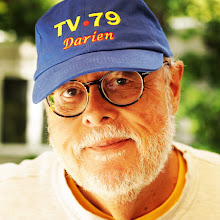The VNR Is Dead!

My new partner, Amy Fond, comes to Cameron Communications Inc. from a long career in journalism and video production. As she writes below, the times are changing when it comes to VNR's!
- Jim Cameron, President
----------------------------------------------------------------
It used to be king when it came to getting your story on news broadcasts – but now VNR - are three letters some stations don't want to hear.
Video News Releases have your message embedded in them. When a station runs the full VNR – you're assured the story you crafted will be aired. They're designed to be indistinguishable from actual TV news reports - but that's the main problem with the Federal Communication Commission.
The controversy began a few years back when the FCC starting cracking down on VNR use after it was discovered the White House was using them to promote its own agenda. Critics called the VNR’s “paid propaganda”, with taxpayers footing the bill!
The FCC took action – either stations disclose the source of the VNR footage, with a title on the screen, or pay a hefty fine. Many stations chose option "C" – don't run VNRs at all.
Broadcast PR companies who produce VNRs saw a sharp decline in their airings. Once, a VNR could reach over 7 million viewers. Now monitoring reports were coming back with a few hundred thousand eyeballs in smaller markets. With results harder to deliver, production companies who used to produce 15 VNRs a month – now send out 4 or 5 a year. Instead many are looking beyond VNRs - turning to paid placement, b-roll packages and live guest bookings to get clients’ stories on the air.
So what does this mean for you?
You either need truly compelling video, or a spokesman who can deliver on the spot. Paid placement vehicles can be as short as half a minute and look like public service or informational announcements.
Can the executive, doctor or celebrity you're working with convincingly convey your messages in as little as 10-12 seconds? Can they ensure your message will be heard during a live interview where they can't control the questions?
If you have a third party spokesman, tips or advice for viewers, a true news hook and a willingness to curb your product mentions – then a VNR may still work for you.
Otherwise, you’d better be certain your spokesman has had media training to make sure your message will be heard!
Labels: FCC, Public Relations, video news release, VNR

